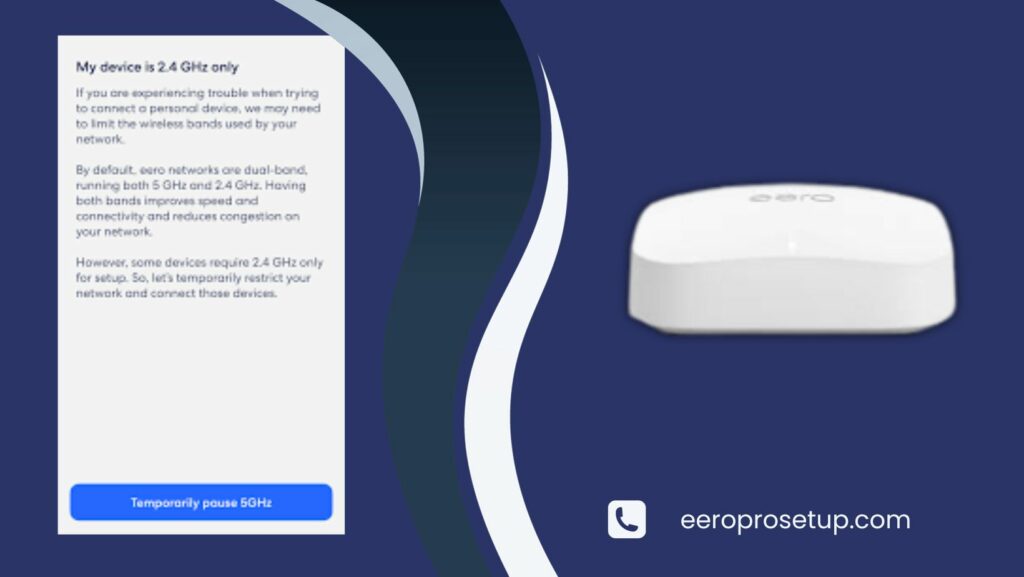How does eero work with 2.4ghz frequency?

In today’s tech landscape, staying connected is vital. With our homes filled with devices, having strong Wi-Fi is a must. That’s where eero shines. It’s a game-changer for wireless networks. This guide digs deep into how eero operates, especially with the eero work with 2.4Ghz frequency. Understanding this aspect is key to grasping how eero ensures dependable and smooth Wi-Fi connections across all our gadgets. It’s this innovation that transforms our interaction with wireless networks, making eero an essential tool in our modern, connected lives. Understanding eero work with 2.4ghz frequency: A Brief Overview The eero system is more than a router; it’s a whole new way of setting up Wi-Fi at home. It creates a web of connections across your place, making sure every corner has great Wi-Fi. Setting it up is super easy, and it works smoothly with your home network. This system, including its use of the 2.4GHz frequency, changes how we think about and use Wi-Fi, making it a fantastic choice for your home connectivity needs. The Significance of 2.4GHz Frequency in Wi-Fi Technology Wi-Fi technology operates on different frequencies, and the 2.4GHz band is one of the most commonly used frequencies for wireless communication. This frequency offers a wider coverage area compared to higher frequencies and possesses the ability to penetrate through walls and obstacles more effectively. However, it might be susceptible to interference from other devices using the same frequency, potentially leading to signal congestion and reduced speeds. eero’s Utilisation of 2.4GHz Frequency Eero employs both the 2.4GHz and 5GHz bands to enhance connectivity. The Eero work with 2.4GHz frequency is particularly valuable for extending coverage over extended distances and overcoming physical obstacles. This is a crucial element of the eero mesh system, guaranteeing a stable connection for devices situated farther from the primary eero hub. The Advantages of eero’s 2.4GHz Integration Enhanced Penetration and Range By harnessing the 2.4GHz frequency, eero extends its reach, penetrating walls and obstacles more effectively than higher frequency bands. This results in better coverage, especially in larger homes or spaces with multiple barriers. Device Compatibility and Legacy Support Another significant advantage of eero’s utilisation of the 2.4GHz band is its compatibility with a wide array of devices. Older or legacy devices that may only support this frequency can seamlessly connect to the eero network without any compromise in performance. Optimising Your eero System for 2.4GHz Efficiency Strategic Placement for Maximum Coverage To leverage the benefits of the 2.4GHz frequency, strategically place your eero devices throughout your home. This ensures that the signal blankets the entire area, providing consistent connectivity to all corners. Regular Software Updates for Performance Enhancement Keep your eero system up-to-date with the latest firmware and software updates. These updates often include optimizations and improvements, ensuring your eero network functions at its peak efficiency, especially concerning the 2.4GHz frequency. Conclusion: In a world where connectivity is the backbone of our digital lives, eero stands tall as a beacon of innovation. Its seamless integration and intelligent utilisation of the 2.4GHz frequency redefine how we experience Wi-Fi at home. ALSO READ- Eero 6 AX1800 Dual Band Mesh System eero flashing white light Eero Internet Backup Resetting Your Eero WiFi Network